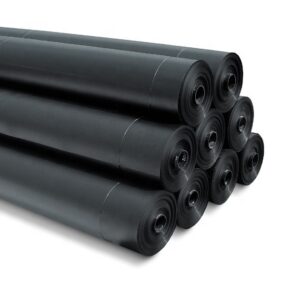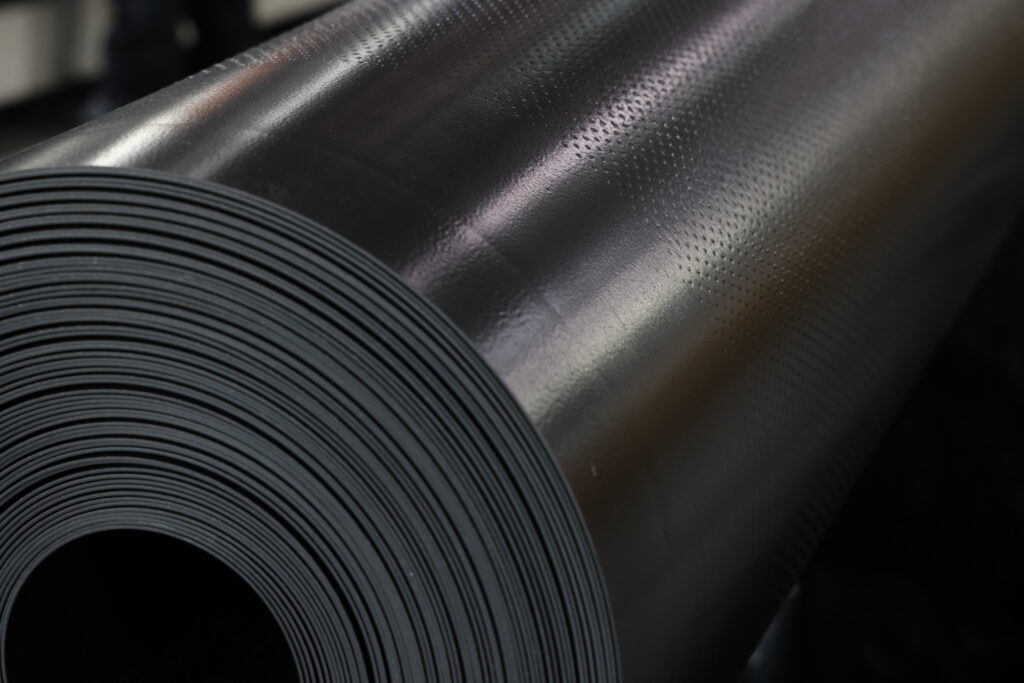What is a geomembrane?
Geomembrane is a material used in civil engineering and environmental engineering. It is mainly used for surface anti-seepage, isolation and protection. It is usually made of polymer type materials, common materials include the following:
High-density polyethylene (HDPE): High-density polyethylene is one of the most commonly used geomembrane materials. It has excellent resistance to penetration, chemical resistance and mechanical strength, and can be used in various civil engineering projects such as pools, reservoirs, dams and landfills.
Low-density polyethylene (LDPE): Compared with high-density polyethylene, low-density polyethylene geomembrane has better flexibility and ductility, and is more suitable for some occasions that require higher flexibility, such as waterproof coatings and Isolation layer in foundation works.
Linear low-density polyethylene (LLDPE): Linear low-density polyethylene combines the advantages of high-density polyethylene and low-density polyethylene, has high tensile strength and flexibility, and is suitable for more challenging engineering environments, such as Landfills and chemical storage areas.
Polypropylene (PP): Polypropylene geomembrane has high tensile strength and creep resistance and is widely used in civil engineering and environmental engineering fields. It is highly corrosive to chemicals and is suitable for acid and alkaline environments.
Polyester (PET): Polyester geomembrane has excellent performance in anti-permeability and tensile strength. It also has good temperature stability and weather resistance, and is suitable for environments with higher temperatures and greater climate changes.
How is geomembrane made?
Raw material selection: Choose polymer materials suitable for geomembrane production, such as high-density polyethylene (HDPE), low-density polyethylene (LDPE), polypropylene (PP), etc.
Extrusion: The polymer particles are heated and melted in the extruder, and the molten polymer is extruded into a film through the die through the extrusion screw.
Stretch molding: By introducing a stretching process, the extruded film is stretched so that it is stretched in both the longitudinal and transverse directions, thereby increasing the strength and durability of the film.
Rolling: The stretched film is subjected to a rolling process to make its surface smoother and more uniform, and to further adjust the thickness and width of the film.
Cutting and rolling: Cut the film to the required length, and roll the film into a roll through a winding machine or reel device for transportation and use.
Inspection and packaging: Inspect the quality of the geomembrane, including checking physical properties such as thickness, strength, permeability, etc., to ensure that it meets the specified standard requirements. The geomembrane is then packaged, usually in roll form, for packaging and protection.

How to stretch geomembrane?
The geomembrane undergoes a stretching process during the preparation process to improve its physical properties and mechanical strength. Stretching can increase the ductility, tensile strength and durability of the geomembrane, making it more suitable for various engineering applications.
Extrusion Stretching Method: This is one of the commonly used geomembrane stretching methods and is suitable for geomembranes made of polymer materials such as polyethylene (HDPE, LDPE). Specific steps are as follows:
a. Extrusion: The polymer particles are heated and melted, and the molten polymer is extruded into a film through an extrusion screw.
b. Extrusion stretching: A stretching device is introduced during the process of extruding the film, and the film is stretched through a traction roller or a traction device.
c. Cooling and solidification: While stretching, the stretched film is cooled to solidify and maintain the stretched state.
d. Rolling and coiling: After stretching and curing, the film is rolled through a rolling process to make its surface smoother, and then rolled and packaged.
This method can achieve stretching during the extrusion process, is relatively simple, and can obtain a certain degree of stretching effect.
However, the extrusion stretching method may require other more complex stretching processes, such as biaxial stretching or multi-axial stretching, for some geomembranes with special requirements, such as membranes with high draw ratios or certain special materials.
In general, stretching is to change the molecular structure and morphology of the geomembrane by applying force or stress to obtain the target physical properties.
Different stretching methods can be selected and optimized for different geomembrane materials and performance needs.
In actual production, the appropriate stretching method and parameters need to be determined according to specific requirements and process conditions.



